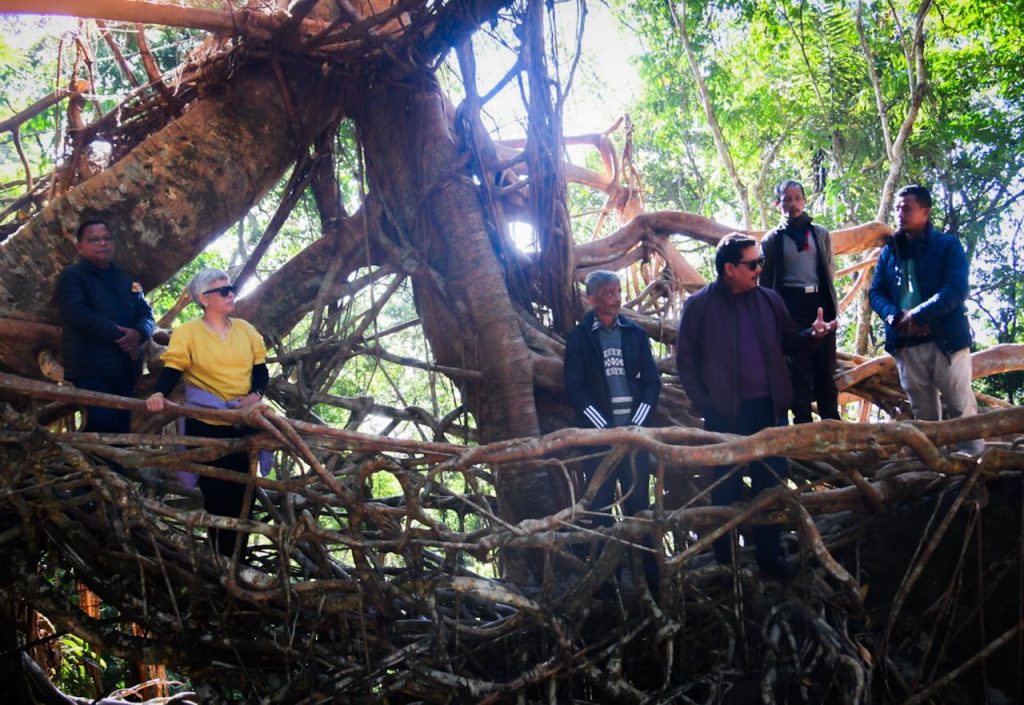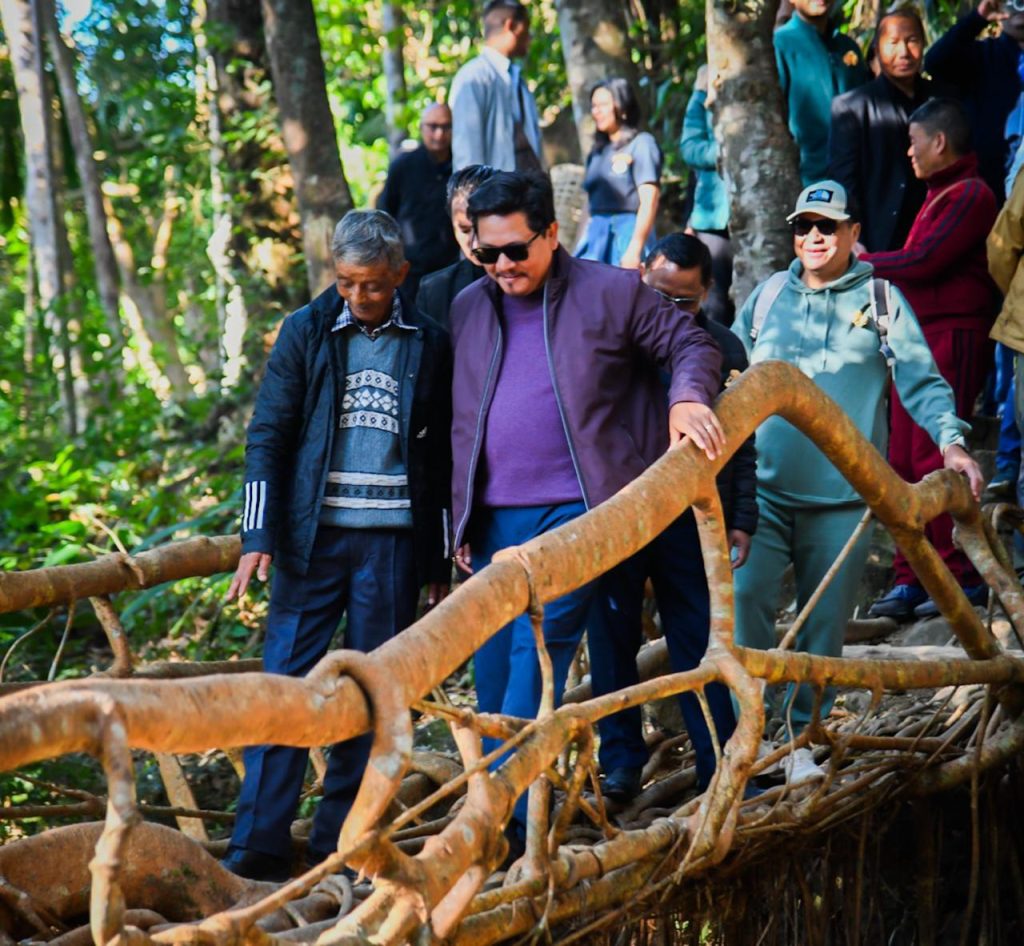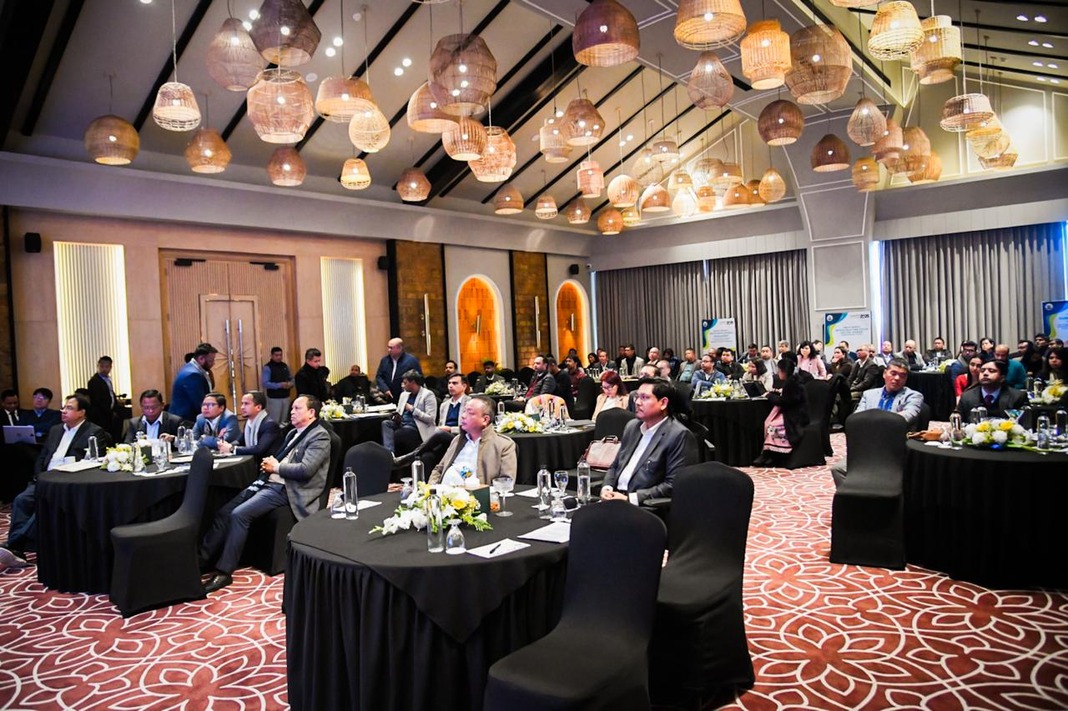Rooted in heritage, growing with progress
Sohra, Jan 12: The trek to the iconic Living Root Bridge was a gesture of respect for a tradition that has shaped the region’s identity for over 300 years.
Meghalaya CM Conrad Sangma and his team took time off from the world of policymaking and visited Siej Village in the Shella Bholaganj block of East Khasi Hills. It showed the government’s intention to root policymaking in the cultural and ecological realities of the region.
The Chief Minister lauded the bridge as a symbol of sustainable ingenuity and cultural heritage, underscoring the government’s commitment to preserving Meghalaya’s unique traditions while advancing development.

A Bridge Rooted in Heritage
The Living Root Bridge, created by weaving the roots of rubber trees, stands as a testament to the wisdom and resourcefulness of the village’s forefathers. Speaking to the community, the Chief Minister praised their dedication to safeguarding this natural marvel.
“The Living Root Bridge reflects the harmony between people and nature,” he said. “This tradition is not just a part of our history—it is a lesson in resilience and sustainability that must be carried forward.”
Mr. Hally War, the project’s headman who began nurturing the bridge as a child, shared his story. “I saw the struggles of crossing the river and felt inspired by the stories of my grandparents. This bridge is the result of decades of patience and the collective effort of our community,” he said.

Connecting Policy and Tradition
The visit, though brief, carried significant symbolic value. It highlighted the importance of traditions. “While we craft policies for the future, it’s equally important to honour and preserve the past,” the Chief Minister noted.
During the visit, he also announced new infrastructure projects to improve connectivity in the region, including the construction of new roads and the upgrading of school buildings. “The construction of new roads and schools will enhance access and opportunities for the local community, while tourism initiatives will bring economic benefits.”
He also spoke on the potential for tourism development in the region. With close to 10,000 tourists visiting the Living Root Bridges annually, the government aims to upgrade tourism infrastructure to promote eco-friendly tourism.
“We recognize the importance of tourism for economic growth in the region,” he stated. “The Tourism Department will be tasked with developing necessary facilities while ensuring that the natural and cultural heritage of the area is preserved.”
The visit not only showcased the government’s respect for Meghalaya’s rich heritage but also emphasized the state’s efforts to harmonize tradition with modern development. For the Cabinet, this retreat wasn’t just about policymaking—it was a reminder of the cultural roots that ground their governance.




